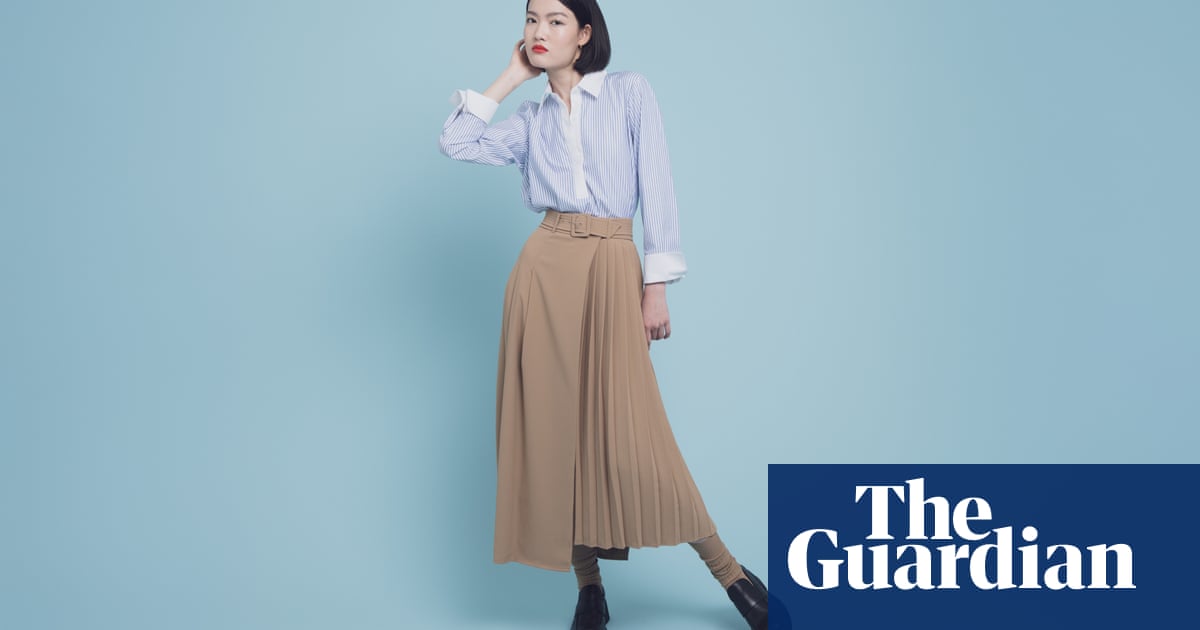The way I see it, if you have high standards, then you have those high standards whatever you are doing. This is not to do with being good at everything, we all have things we absolutely suck at. Standards are about making an effort. And if you are someone who does stuff properly, then you are that person whether you are preparing a presentation deck or cleaning the floor. You are the same person in every room you are in.
This is the real reason to dress well for work. Not because you have to, but because it sets the tone for who you are. And the person you are comes to work to get the job done, and shows respect for their colleagues, right? Right.
In the era of the casual dress code, we are out of the habit of making an effort for work. You have a lot on your mind, and ironing a shirt or coordinating your accessories doesn’t feel like a sensible use of your time or focus. Also, you see the people you work with a lot. They have seen you bedraggled after being caught in the rain and flecked with crisp crumbs as you stress-eat Pringles. They are under no illusions at this point. But like I said – standards aren’t about being perfect. They are about trying.
Mostly, sartorial standards slip at work just because we get into a style rut. We hit upon a good-enough formula, a uniform that is passably smart and takes minimal effort, and we get stuck in that groove. The smart-casual semi-dress-code that applies in many workplaces has elastic boundaries, and those porous edges mean that it ends up lacking definition. Our work wardrobes become a soup of samey, vaguely-presentable stuff.
But there are simple ways to get out of the style rut. A pepped-up outfit will pep you up in the morning. The few extra moments spent on getting dressed could save you the price of a take-out coffee – which, at today’s prices, is not to be sniffed at.
This does not mean you need to start wearing a suit every day. Comfort is not to be sacrificed. Comfort in clothes is absolutely key, in fact, not just because it makes days more bearable but because striding through the world looking at ease is infinitely more chic than looking pinched and hobbled by what you are wearing.
Take shoes. There is absolutely no reason to revert to heels unless you want to, but shoes still set the tone for your outfit. I’m not a huge fan of the slipper-adjacent ballet flat, which has become a default day shoe. These look cute when they are brand new, but as soon as they get worn in they start to look floppy and just sort of … nothingy? And nothingy, for want of a better word, is not a vibe that is doing you any favours. I am evangelical about loafers, which have changed my life. Loafers are the first genre of flat shoe that feels like shoe excellence to me in the way that a court shoe once did. There are a lot of loafers out there: I would steer you toward styles that look unisex, rather than delicate and ladylike. A gold buckle or horse-bit detail looks smarter and lasts better than a tassel. TheCarvela Click loafer, £139, is a good place to start.
Consider embracing the lunch-is-for-wimps energy of a banker shirt. A banker shirt is just a shirt with a bold stripe, which you probably have in your wardrobe already – if not, the menswear rails of a charity shop in a posh area is a great hunting ground. (Don’t worry, you can still eat lunch.)
Sign up toFashion Statement
Style, with substance: what's really trending this week, a roundup of the best fashion journalism and your wardrobe dilemmas solved
after newsletter promotion
The second-jumper trick is another easy hack, which will add polish and modernity while making you more comfortable rather than less. Unless you have been hiding under a rock for the past year, you have probably noticed that draping a sweater around your shoulders is A Thing in fashion. Pick one in the same shade as the rest of your outfit – this makes you look intentional, rather than just chilly – and tie it around your shoulders. You will need to stand in front of the mirror, which feels silly but is essential if you are to get this right, so take the time. Standards, remember?
Model:Tomiris at Milk. Styling assistant: Sam Deaman.Hair and makeup: Sophie Higginson using Sam McKnight and Tom Ford beauty. Shirt,£100,The Shirt Company. Skirt,£72,Karen Millen. Earrings,£85,Dower and Hall. Loafers,£130,Vagabond. Socks,£20,Falke
